 Facebook
Facebook
 X
X
 Instagram
Instagram
 TikTok
TikTok
 Youtube
Youtube
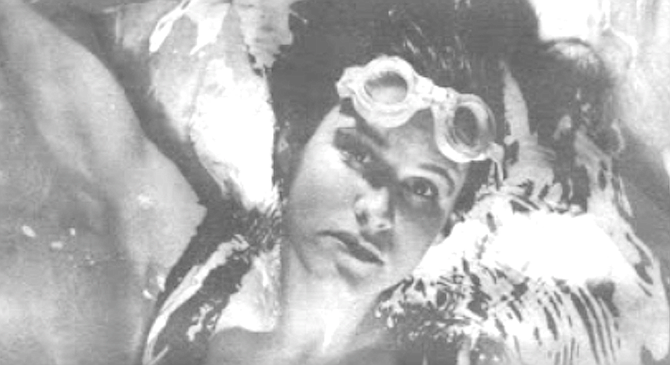
On the sands at the Children’s Pool in La Jolla, Debbie Murphy is kneeling next to a pile of very expensive bathing suits. At her side stand two young women, each quite tall and shapely, one a reigning beauty queen — Miss Greater San Diego, 1983. Murphy tosses a flowing, bright-orange cloak and a scrap of white fabric to the beauty queen, who pulls the cloak over her fluffy long curls. Gathered at the neck, the garment hangs down to her heels and creates a sort of wearable dressing room.
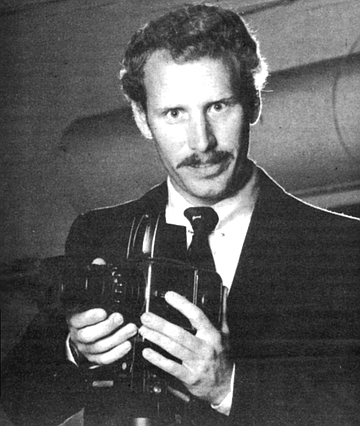
Under its cover, the girl wriggles. A moment later she removes the cloak to reveal a scanty white bathing suit, which more than anything resembles underwear. Last year celebrity model Cheryl Tiegs wore this very suit on the cover of Sports Illustrated’s much ballyhooed annual swimwear issue; since then thousands upon thousands of women across America have paid fifty-eight dollars to own one. And every copy has been manufactured at a factory at Seventh Avenue and J Street in downtown San Diego.
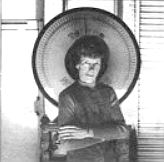
The beauty queen scurries down the beach to pose before a camera wielded by twenty-six-year-old Frank Taliaferro. Taliaferro’s father founded the local swimsuit company, Elon of California, and the son has served as the firm’s photographer since his high school days.
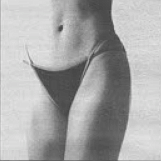
Over the years, as Elon has risen to rank among the swimwear industry’s elite, more and more fashion magazines have clamored for photographs of Elon’s suits, which usually sell for between fifty and sixty dollars; last year a sequined and embroidered one-piece outfit carried a price tag of $171.
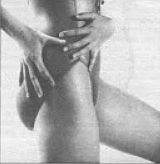
These are not bathing suits worn by the masses, but the Taliaferros boast that time after time, design elements in Elon’s products have exerted an influence over the look of beachwear in America.
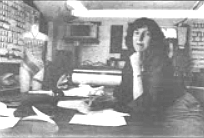
While Taliaferro is photographing the beauty queen, Murphy, a manager at Elon, locates the next suit to be featured, a wide-shouldered, plunging-neck one-piece made out of a shiny-black, almost wet-looking fabric known as cire. “This suit will be in Sports lllustrated's swimsuit issue this year," Murphy comments. What makes a suit au courant at any given moment isn’t always obvious, she concedes. In this case, she explains that the fabric is modish, and even more innovative is the width of the shoulders, which makes the wearer’s waist and hips appear slimmer in comparison.
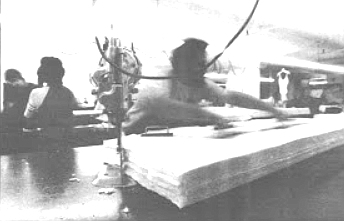
A moment later the second model runs off to be photographed and the beauty queen returns to Murphy. It’s easier for the untutored eye to identify the new design elements in the next suit. Elon calls the style “locker room," and this example is gray with black edging and a black plastic belt.
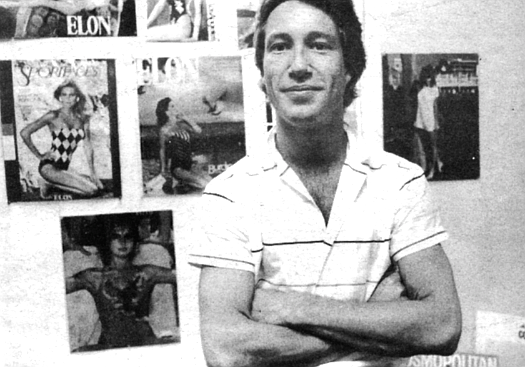
Somehow the color combination alone suggests a gymnasium, but even more striking, according to Murphy, is the fabric, the same sort of polyester-cotton blend Elon used in the Sports Illustrated lingerie suit. “Although cotton-blended fabrics have been around for the last few years, they did not do all that well, first because of quality problems, and secondly because people just did not know how to style them,’’ Murphy says.
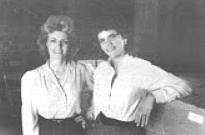
She claims the lingerie-look bathing suit changed that; the strong consumer response to it initiated the dramatic switch from the nylon and spandex traditionally used in bathing suits. As a result, “that poly-cotton blend is what’s hot in swimwear this year,’’ Murphy declares. “It’s that textured look, that T-shirt feel.”
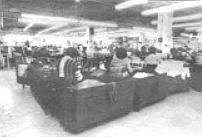
Murphy has a talent for clearly explaining the quirky fashion currents, and one day not long after the La Jolla photo shoot she took time out from her supervisoral chores at the factory and led the way to a wall in the factory’s front office. Fastened there are cardboard panels, like a gallery display, that photographically document Elon’s swimwear lines from the last several years. Each panel contains a tiny photograph of every piece of apparel the company has produced. Glancing over them is a little like watching a speeded-up movie: you see eight years of beach wear trends compressed into one compact viewing.
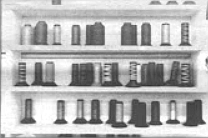
Among the 1977 offerings, for example, Murphy draws attention to the lines of the leg apertures, the vast majority of which were cut horizontally straight across the thigh. “That’s what people were buying then,” she says with a shrug. In only one of the 1977 suits does the leg arc upward toward the waist in the so-called French cut, an industry innovation for which Elon’s designer, Monika Tilley, received singlehanded credit.

On the chart for the next year, 1978, the leg openings on several other Elon suits manifest the upward creep which seemed to culminate in the hipless apparel so much in evidence last summer.
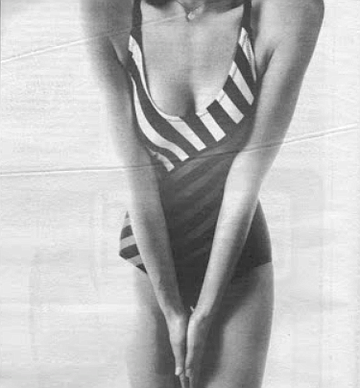
Murphy points out other landmarks in Elon’s history. In 1978 the company’s first string bikini appears; two years later Elon starts using fabrics of contrasting bright colors in the same suit, “which was considered pretty wild — to take, say, magenta and red and put them together.” The photographs reveal failures and dead ends — shapeless pleated tops, for example, 1982’s bad idea — but the panels also illustrate how certain trends evolve overtime.
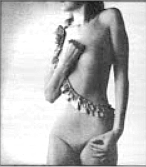
Murphy, for example, mentions that one problem plaguing the suits with high-cut thighs is the tendency of the fabric covering the rear to bunch up in the crease of the wearer’s buttocks. In response to that, Murphy says designer Tilley this year conceived the idea of bringing the highest point of the cut forward onto the front of the thigh, rather than on the side of the hip. “That way you still get maximum thigh exposure without losing your seat coverage. We've found that it's a really flattering look, and it's doing very well,” Murphy says.
There's something startlingly incongruous about the idea of any sort of national trend-setting taking place within the Elon building in downtown San Diego. It’s a faded hulk of a place built as a public works project during the Second World War to serve as some sort of bomb shelter, according to Frank Taliaferro. His family (who pronounce their name as if it were spelled “Tolliver”) bought it and moved the business here in 1966; before the move, Taliaferro’s father, Elon Hayden, ran his operation out of another building at Eighth and Market.
The senior Taliaferro didn't begin his career by making bathing suits. He started in 1939 with motor covers and parachutes for the Navy and continued during World War II. When the fighting stopped, he found a use for his 250 sewing machines by making fancy girdles for an outfit called Mabs of Hollywood. That contract gave him experience working with stretch fabrics, and almost immediately set him to thinking about the swimsuit industry, where he saw plenty of room for competition. By the late 1940s he had entered the field, at first designing and producing all the patterns himself. “He taught himself,” says his son. “It’s called necessity. My parents were struggling for a long, long time.” The senior Taliaferro had married one of his seamstresses, a slipmaker from Missouri named Sylvia who had moved to San Diego in 1946, and their son says that when he was growing up, “it seemed like my parents were never home. They’d always be working two shifts.” By the Sixties, the senior Taliaferro no longer took full responsibility for designing the outfits, but instead hired the first in a series of professional fashion designers. In 1968 the job went to Tilley, an Austrian-born sportswear designer.
Mrs. Taliaferro recalls that several years passed before Tilley became really proficient at designing bathing suits, but once the designer fully developed her skills, she firmly established Elon as a bathing suit trendsetter. Elon employees boast that Tilley has been the only swimsuit designer consistently to create bestselling fishnet suits, starting with one introduced by model Cheryl Tiegs
which Life magazine selected as “the swimsuit of the Seventies..” By 1976, Tilley had won the fashion industry’s top award. She claims credit for designing the first really “unconstructed” (seamless, braless, supportless) spandex suit; she created a ruffled one-piece which in 1981 kicked off a ruffles mania still in evidence on department store swimwear racks. By last summer People magazine, writing about Tilley’s new “lingerie"-style suits, was trumpeting the Elon employee as “America’s leading swimsuit designer.”
Throughout the course of her association with Elon, Tilley has always worked in New York, sending her ideas for suits to San Diego in the form of rough sketches. It’s a somewhat unusual arrangement. Normally designers work where their creations are produced — which with swimwear mostly means New York and Los Angeles. But the Taliaferro family members say their fondness for San Diego has made them willing to accept the minor inconvenience of a one-day shipping delay. On the other hand, a New York base not only has enabled Tilley to monitor closely fabric and other supplies; she has cultivated a busy network of contacts with New York-based fashion journalists who in turn have regularly spotlighted Elon products in such periodicals as Harper’s, Vogue, and Cosmopolitan. This steady editorial coverage, incidentally, has allowed the Taliaferros to avoid advertising. “We just don’t believe in it,” Frank Taliaferro sniffs.
So the Taliaferros have modified their production process to accommodate the long-distance designer. That process is cyclical, with two annual peaks. One comes at the beginning of August, when bathing suit manufacturers unveil their “cruise lines,” the suits and cover-ups aimed at cruise ship patrons and other winter sun-seekers. For Elon last year this consisted of some eighty items. Sales figures throughout the fall and Christmas seasons guide the company in deciding which of those outfits to drop, a process that by January typically has whittled the line down to one-third its August size. But right after the first of the year, manufacturers nationwide fling open the doors upon their Summer Additions. For Elon the most recent crop consisted of twenty-seven new items.
The January additions are what Taliaferro was photographing the other day in La Jolla — the “locker room” suits, new fishnet suits, and other outfits Elon will begin delivering to stores across the country by the end of March. Despite that approaching deadline, Taliaferro was unperturbed by the fact that in mid-January his workers still had not yet begun sewing the suits necessary to fill those orders. “WeTe still waiting for all our fabrics to come in.” An ability to produce suits quickly is the crux of Elon s competitive position. Taliaferro boasts that Elon is one of the few bathing suit manufacturers in the country in which the entire operation is contained in one location, which gives it valuable flexibility and quickness in response to changing demand. “In two weeks, let’s say one style takes off and another is a dud. ... We have the ability to produce [more of] just those we’ve sold.”
In a private office within the factory, Taliaferro sits at an expansive desk cluttered with glass ashtrays, knickknacks, camera equipment. At his side is propped an expensive pair of snow skis; pictures of curvaceous women in skimpy swimwear hang from the walls. Other features of Taliaferro’s lifestyle hint at the family businesses’ prosperity. Taliaferro drives a $48,000 Porsche with personalized (ELON 4) license plates; he and his father employ a fulltime mechanic to tend to the fleet of antique cars they store in a warehouse around (he comer from the factory. But Taliaferro grows tight-lipped at the question of Elon’s earnings, stating only that a five-million-dollar-per-year figure reported by People magazine last summer was inaccurate. “I just don’t believe in discussing figures,” he says.
Taliaferro has taken over most of the direction of the business in the past few years as his father has suffered from medical problems. “I started working at the factory when I was ten. I’d help out with cutting cloth during the summers.” After growing up in Point Loma and completing high school at Francis W. Parker (a private school near the University of San Diego), Taliaferro worked in the family business during the day and took night college courses — but not for long. He’s not very interested in books, but he says he rather enjoyed the notion of running a business in which he would spend most of his time eyeing girls in bathing suits.
He talks about his domain with obvious satisfaction, and he talks fairly openly, despite the secrecy that sometimes shrouds the industry. The company takes some pains to guard its new designs as they’re being prepared for the biannual showings, particularly since the year when all the suits and cover-ups were stolen a day and a half before their unveiling. That incident baffled Elon, since the stolen designs never surfaced elsewhere. Nonetheless Taliaferro seems resigned to seeing the appearance of cheap copies of other Elon designs. He says the company can’t really do much about such “knock-offs.” Elon instead concentrates on simply trying to show its new bathing suits to the commercial buyers first — before any imitations materialize. “Then the buyers have a tendency to buy from the design originator because they know it will be out fastest,” Frank says.
He leads the way to the design room and grabs a sheaf of old pencil sketches sent to San Diego by Monika Tilley in New York. The drawings are primitive, intended to express little more than ideas, yet every Elon bathing suit has its inception in them. Next to each sketch are thumbnail-size fabric swatches that show the colors to be used, but the real work of turning these ideas into three-dimensional objects which look good on three-dimensional women falls to Elon’s pattern maker, Holly Withers.
“I kind of interpret the sketch,” says Withers, a young woman who came to Elon two and a half years ago armed with a fashion degree and experience designing jogging suits for Jantzen in Los Angeles. ‘‘I make decisions like exactly how high the leg should be, things like that.” Confronted with a radical new design, Withers might need half a day to construct a pattern; she figures she works twice that fast on suits for which she can use some existing pattern elements. In the course of each year, she estimates she produces at least 200 patterns, each one of which is made into a size-ten sample, and then reviewed by Tilley, the Taliaferros, and several other Elon staff members. Some of these suits are scrapped immediately while others undergo up to ten revisions. “Belts come on and off. Legs come up and down. Backs may change. Necklines may change,” Withers says. A fraction of the original ideas, fewer than half, are expanded into five different sizes and materialize as sales samples.
By that point. Withers claims she can guess which suits will sell well. But she says that earlier, in the sketch stage, it’s almost impossible to pass judgment on a suit. As a favorite example, Elon workers mention the sketch Tilley sent in 1981 for a purple one-piece which crisscrossed in front and was decorated with big ruffles colored gold, turquoise, and red. Everyone hated it. “My first reaction at the factory was, ‘The girl’s going to drown in all those ruffles,” Withers says. But the finished suit gave its wearers a look of sleek yet frilly-busted femininity. Harper's magazine featured it in a full-page spread, and Elon watched the suit become one of its all-time winners, selling briskly for three consecutive seasons.
Last year’s much-applauded “lingerie” suit enjoyed a more auspicious beginning. Withers says one day in October of 1982 Monika Tilley sent to the San Diego factory some cottony white fabric, four little pieces of lace, a rough sketch, and the urgent message that Sports Illustrated wanted to see a finished product in three or four days. Withers says, “I remember that Sylvia [Taliaferro, Frank's mother] pricked her finger when we were pinning it up and we all panicked. We didn’t want to get blood on our only pieces of lace.” That mishap averted, “this was a case when the suit came out gorgeous on the first try. . . . We all loved it. It just looked stunning on our [in-house] model.” Nonetheless, Taliaferro and his father still mentally classified the suit as being an “editorial” design — produced for its value in publicizing the company rather than with the expectation it would ever reach full production. That expectation quickly changed, Taliaferro says, when word came that Cheryl Tiegs would appear on the magazine cover wearing the suit. “When [Sports Illustrated] finally appeared, we made sure the suits were in Saks Fifth Avenue,” Taliaferro says.
Taliaferro leaves the factory’s design room and steps to the area where all of Elon’s patterns are cut. At one long table a man is laying out pattern pieces on a twelve-foot span of fabric as if he were working a giant jigsaw puzzle; he is looking for an arrangement that will waste the minimum quantity of material. Across the room another man is guiding the straight knife edge of a large mechanical cutting tool through sixty pieces of turquoise and purple-striped cloth. Later, in a different part of the factory, every time one of those stripes reaches a seam, it will have to match precisely with a stripe of the same color.
The sewing all takes place on the second floor of the Elon building, a noisy open loft lighted by fluorescent fixtures and daylight which filters through high windows stained with grime and old paint. At peak times of prosperous years — now, for example — more than a hundred seamstresses labor here, and the Taliaferros say that’s still not enough to produce the optimum of 1500 to 2500 swimsuits a day; at the moment a sign on the front of the factory announces more job openings. But the work is highly seasonal. By May the layoffs will begin, and in July and August only a handful of managers and sample makers will remain at the factory.
The seasonal nature of the job is appreciated by many working mothers whose children are out of school during the summer, according to Mrs. Taliaferro. Clearly the work only seems to attract women, mostly Hispanics and Orientals. Supervising the seamstresses is Mrs. Taliaferro, a self-effacing wisp of a woman with the keenly practiced eye of one who has stitched away years of her own life in this room. Strolling down one aisle, she pauses in front of a young woman engaged in transforming white cord into colorful spaghetti straps by sewing a purple striped material around the cotton cord. “Is your machine broken?” Mrs. Taliaferro questions, alerted by some superfluous motion the worker is making. “Have it checked if you’re having trouble.” A few feet away, she notices another young woman attaching lengths of elastic to white cloth. “Don’t throw that away,” she halts the worker from discarding a remnant.
No one person sews an entire bathing suit. Each woman performs only a brief step in the process, and when you the steps, an average Elon suit probably takes twenty to twenty minutes to sew, with a similar time allocated to all the preparation before and after the sewing, according to one manager. Since every seamstress's pay depends both upon her speed and the complexity of her task, Mrs. Taliaferro says the women make from four and a half dollars an hour up to more than nine. A note of wonder creeps into her voice when she tells how she recently monitored a group of workers, all of doing the exact same task. Two of the seamstresses weren’t meeting their quotas, while the other three were scattered all over the pay scale, one earning almost ten dollars an hour for her rapid work. “It’s hard to understand," she says of the variations in in work speed.
"When a girl really knows what she's doing, it can be almost beautiful to watch," she says softly. She quietly walks up behind a petite Japanese woman working behind a battered metallic gray Singer. Today the woman is finishing the thigh seams in one-piece suits made out of a red and black zebra-striped material; the speed with which the worker shoves the material under the chattering needle looks almost reckless.
Like all the seamstresses, the Japanese woman sits in the middle of a kind of island, surrounded by wooden bins all stained a warm brown. The ubiquitous dark wood lends a warmth to the room which offsets the crumbling plaster columns and the unshielded fluorescent tubes hanging from the ceiling. The wooden bins hold bright bundles of bathing suit pieces, and on the nearby workbenches, cardboard boxes overflow with squiggly straps in turquoise, black and white, hot pink, yellow, and striped pumpkin. All this fabric, so luxuriously colored and patterned, does contribute a certain cheeriness to the factory, like confetti at a party. Here and there jewel-like bobbins of thread stand arranged according to the color spectrum. The growls and grunts and whinnies of Elon’s geriatric mechanical sewing machines rise above this scene and mingle with the softer refrain of music playing on radios tuned to Spanish-language stations.
Even though on this particular day the seamstresses have not yet begun sewing the newly announced Summer Additions, they’re swamped with another source of orders for the San Diego swimwear company. In addition to selling the high-priced, high-fashion bathing suits, Frank Taliaferro says the company makes bathing suits for the Sears and J.C. Penney chain stores. This is a fundamentally different business from the high-fashion work, and Taliaferro seems almost a little embarrassed in discussing it. The chain suits, which bear “Sears” and “Penney” labels, rather than ones which say “Elon of California,” often carry a retail price of only twenty dollars — less than the wholesale price of some of Elon’s high-class outfits. But there are major differences between the Elon line and the chain line, Taliaferro stresses. A big part of what one is paying for when one buys an Elon suit is novelty, a smug position on the vanguard of fashion. The chain store suits, in contrast, are either older Elon designs which have been proven for some time in the marketplace, or they’re new but conservative designs. For the chain stores, the local manufacturer makes only a few types of suits — in large quantities. “We probably make a hundred Elon suits a year, but only ten different suits for Sears and Penney’s,” Taliaferro says. He adds that the chain suits tend to be cut less revealingly and are made of less expensive fabric. The volume of the chain business provides enough steady income to allow Elon to take occasional risks with the high-fashion suits, but with a disparaging wrinkle of his nose Taliaferro says, “I hope you don’t write much about that. That isn’t Elon. ”
A visit to one of the company’s showrooms can reveal Taliaferro’s conception of what Elon really is. There are two showrooms, one in New York and one in the heart of the Los Angeles garment district. The latter is situated on the top floor of one of the twin towers of the California Mart on East Ninth Street in downtown L.A.
More than 10,000 different lines of clothing, ranging from footwear to fur coats, are displayed in the complex, and among them are well over a hundred different swimwear makers — the majority of the manufacturers in the business. The Mart is a strange place; it’s built like an office building, but instead of offices, its corridors are lined with one plate glass window after another, and through the windows can be seen showrooms where the work of professional decorators is clearly in evidence. To the outside of the Elon showroom is attached a logo every bit as glitzy as those down the hall for Jantzen, Oscar de la Renta, Bill Blass Beachwear.
Walt Osborne, Western sales director for Elon, is almost a caricature of the young, hip, L.A. businessman: blond hair precisely styled and blown into place, gold neck chain hanging into the section of his chest revealed by the V-neck of an expensive sweater. He speaks the jargon of the rag trade with a rapidity to confound an outsider’s ears. He explains that Elon doesn’t make any suits in the “Junior” category, more risque suits which generally cost less than thirty-two dollars and are designed for buyers most concerned about stylishness at the expense of quality. Elon’s staple are “Updated Missy” suits aimed at slightly older and more affluent women with trim bodies. (This differs from “Missy Missy,” which according to Osborne “is a dumber, older look for the woman with sophisticated tastes but who maybe doesn’t quite have the figure. . . . Maybe she needs a little help, something like bra cups or a skirt.”)
Osborne shares responsibility with a showroom manager for displaying Elon’s line to the buyers from all over Western America who march through here during the months following the biannual release of new designs. At the moment, he’s taking orders for deliveries that will continue through June. “You know how these department stores are,” he says conspiratorially. “July hits and they start pulling in all their swimwear and putting in their wools. None of us [manufacturers] like it! When we see our stuff on sale the first week of July, it just kills us! Summer is just starting and people would certainly continue buying bathing suits. But the stores only care about who’s going to be the first to get in the swimwear, about who has the new looks.”
This afternoon he greets two young female buyers who have flown in from the Midwest representing a chain of forty-five “Albert’s” stores in Detroit, Chicago, and St. Louis. The women take a seat across a desk from Osborne, and as an introduction one of them announces, “We predominantly sell to Juniors, with maybe twenty-five to thirty percent Missy. Some of the lines we carry are Sassafras, Jantzen, Dippers.” In response to a query from Osborne, the buyer says that the chain’s average swimsuit costs about thirty-two dollars. “Forty’s pushing it.”
Osborne suppresses a wince. “You know, our number-one suit retails for fifty-eight dollars.” The women exchange a look. “That’s the suit that was on the Sports Illustrated cover last year.” Osborne gamely starts pulling out Elon’s current best-sellers from a cupboard and hanging them on a white plastic lattice structure next to him. Besides the lingerie suit, there’s a white fishnet one-piece, which Osborne confides is scheduled to appear on an upcoming cover of Shape magazine. “You know, with fishnet Elon started it all, and we continue to dominate,” Osborne boasts.
He extracts samples from Elon’s Neon Lights group of suits, so called because of the bright purple, yellow, turquoise, and tomato-red trim around a body of black fabric. “This suit has done fantastically for us. So one thing we did for our January editions was to bring it out in white.” He also whips out the wide-shouldered, slick-surfaced black suit which he says is scheduled to appear in this year’s big swimwear edition of Sports Illustrated.
“Is anyone famous going to be wearing it?” one of the women asks. “That could make a difference.”
Osborne doesn't know, but sensing approval for the suits, the sales director suggests that the showroom manager, a slender young woman, model the current best-sellers. While she’s changing, Osborne tells the buyers, “This is what I would advise you to do. We’ve found that if the styling is right, price becomes secondary even in a junior store. If the girl likes it, she’s going to pull out that extra ten to fifteen dollars because she wants to look a little better than anyone else. Now, all these suits I’ve just shown you are price-is-no-object suits.’’ He suggests that the women “gear into this and start building a program.”
Noncommital, the buyers ask if Osborne thinks this summer’s Olympic Games will have much influence on bathing suit styles. The salesman answers, “It’s hard to say. Here in California fads come and go. I think for two or three months, (Olympics] are going to be the hot, hot thing, probably more in the Junior end than in Missies.” But Osborne is reminded of the example of animal-stripe suits a few years ago. (These included leopard spots, giraffe markings, and soon, as well as zebra stripes.) “Boy, they were the talk of the town. And then one day they just died. You couldn’t give ’em away.” He says this year many manufacturers have reintroduced animal prints, including Elon, which is offering subtler, more understated designs than those which failed before. “It’s hard to say about them yet,” Osborne says to the buyers. “Everyone’s still kind of leery because of what happened last time.”
Though polite, the two women leave without placing an order, a development Osborne takes philosophically. “You have to know what your niche is,” he declares. “I refer to Jantzen as the Chevrolet of swimwear, as opposed to how I see Elon, which is the Rolls Royce.” He describes the average Elon customer as “a gal eighteen to forty with a good figure and a good head for fashion. She likes to be a little different. She definitely buys a new suit every year, probably three or four. She’s probably got a suit for tanning and a suit for going to the country club pool.” He warms to the theme. “This is the gal who hops out of her Mercedes Benz at the beach in a fifty-dollar suit and a twenty-dollar cover-up. A Jantzen customer doesn’t even understand my suit! I compete with Bill Blass. I compete with Gottex — the more fashion-oriented types.” Osborne turns around and pulls out another of Elon’s January Editions, a claret-colored one-piece suit which is distinguished by “shirring,” a gathering of the material along two vertical front panels and along the seam down the center of the rear. The idea is to accentuate the flattering lines in the wearer’s figure. However, Osborne says, “My designer would probably kill me if she heard me say this, but I wouldn’t dare to try to sell this suit to a customer who’s going to look at it and think, ‘Hey, I can get a plain-colored suit for forty dollars.’ But this” — Osborne grabs and waves around the white lingerie lookalike — “with this she’ll think, ‘This is great! I’m going to look sexy; I’m going to look forward. Nobody else has this.’ ”
Back at the factory in San Diego, Donna Brown repeats Osborne’s statements in a more subdued manner. Brown, the company’s purchasing agent, is a ten-year Elon veteran, and she says, “We’ve found consistently that our top ten suits are not our most economical.” Buyers have to look at a suit and feel they simply must possess it. But Brown says that doesn’t mean the high prices are set arbitrarily. First, Brown says, at least half a bathing suit’s retail price goes to the store owner. In the case of the fifty-eight-dollar lingerie suit, for example, the retailer’s markup will generally mean that the store will keep about thirty dollars. And a commitment to ride the trendy waves has other economic implications, according to Brown. Because the fashions are constantly changing — animal stripes all the rage one week and unsalable the next — a high-fashion house such as Elon has to be able to respond equally fast, which means producing most things in inefficiently small quantities. “You can’t go to your full height in your cutting room or to full, maximum bundles in your sewing room.”
Brown adds that while a lot of the American garment industry has moved its iriariUfacturing plants to foreign countries such as Mexico and Taiwan, “the fashion houses — because they want quick turnover, can't commit to, say, 20,000 items a year and a half ahead, which is the time it takes to get something offshore. . . . Elon just moves so fast, and we can control everything here. We can control the cutting, the sewing, the sales.” With everything under one roof, Brown says Elon can easily make the multiple changes sometimes necessary to ensure a really good fit, another of the advantages Elon is “selling” and another source of upward pressure on the price. Finally, Brown says keeping the production in downtown San Diego, rather than in a foreign country, allows for the tightest control over quality.
Brown confides a personal opinion — that no swimsuits made today can compare in quality with the way suits used to be made ten or twelve years ago. But that’s an ironic result of technological changes in the fabric industry, she adds. She says the girdle-type fabric from which swimsuits once were made was a "completely different type of spandex, very heavy and closely woven. . . . It lasted forever.” If tougher, however, that older material also had almost no “give.” In order to get it to fit to women’s bodies, the old-style suits had to be highly “constructed,” with seams under the bust and padding here and there; some of them even had stiffeners of the sort used in old-style corsets. Revolution came with the invention of a much lighter spandex that would cling to wearers' bodies — thus allowing designers far more freedom. Brown says. “And these fabrics simply do not take the abuse that the fabrics did ten or twenty years ago." All of them wear out faster, though she adds that quality differences make some bathing suits look better much longer than others.
Those quality differences seem like mere details, but Elon is very concerned with them. Brown says, “It starts with the fabric. . . . There’s a lot of difference in the weights.” She says you can buy cheap swimsuit material for less than three dollars a yard, but Elon suits are made from six- to ten-dollar fabrics. Then there’s the elastic used on all openings. Brown says while many companies have adopted the use of “raw” rubber elastic, Elon uses only an elastic covered with a cotton braid. “It has better staying quality. In other words, after it stretches, it returns. Whereas when you're using the raw elastic, after a while the legs will get bigger, for example.” Elon zigzag-stitches all its legs — more time-consuming, but another way to make the legs hold their shape longer. All fabric patterns are carefully matched. All edges are finished.
“Elon is very well made. They’re one of the best,” concurs Pilar Jensen. Jensen has some perspective on both the bathing suit business and Elon. For forty years the Barcelona native has operated Pilar’s Beach Wear in Mission Beach; she now carries suits made by forty or so different manufacturers, including Elon, making her one of very few retailers in San Diego to sell the local product. (Nordstrom, Saks Fifth Avenue, and Neiman-Marcus also sell Elon.) She says one reason many retailers snub Elon is because Elon operates a “factory outlet” on Eighth Street, around the corner from the company. Not that the outlet is a very alluring place to shop. Often customers have to walk to the factory to fetch someone to open the outlet doors, which share quarters with what Frank Taliaferro refers to as the “toy room,” the warehouse filled with the Taliaferros’ antique car collection. Inside the grubby store quarters, the latest Elon suits — this year’s models — also cost just as much as they do in Pilar’s pleasant boutique. However, the factory outlet also contains drastically reduced prices on leftover swimsuits from previous years, and it offers some mark-downs on suits with barely detectable flaws. Jensen may not like this competition, but she carries Elon because she has so much respect for the designs. “They have that elegant, classic look,” she says.
Jensen thus seemed startled by the recent news that designer Monika Tilley is quitting the San Diego company after having worked for Elon for fifteen years. This development caught the Taliaferros completely off guard one day at the beginning of February. “I know my parting was rather traumatic for them,” Tilley said from her home in New York. “But sometimes it’s a question of having to move on.”
Tilley says she's going to be designing a line of bathing suits which will be released in August and which will bear both her own name and that of well-known model Christie Brinkley. No hard feelings divided her from the Taliaferros, she insists, though she is vague about her precise motivations: a new challenge, better money. Regarding her old employers, Tilley says, “I think they will take a deep breath and go their own way. I think they’re going to do just fine.”
Pilar Jensen echoes that optimism. “Elon is a good line. They're going to get a good |new] designer.” But the prediction is by no means voiced universally. A veteran buyer for one of the large Los Angeles-based chain stores, who asked to remain anonymous, declared flatly of Tilley's departure, “It's going to hurt Elon. No question about it.” This particular buyer is hardly an unrestrained Tilley fan. She says, “Monika Tilley is a very good designer, but she’s ‘itemy.’ When you look at some [other designers’] collections, the whole line is great. But with Elon you really had to pick ’em.” The buyer reiterated that Tilley’s departure couldn't possibly be good for Elon. “It’s always tough with someone new.”
Though the gossip is buzzing in New York and Los Angeles, Frank Taliaferro, back at the factory in San Diego, isn't talking much about Tilley's departure. He smiles tightly. “It came as a very big shock to us.” But he asserts that there are many designers in New York, and ‘ ‘there's a lot who are a lot better than Monika. It’s going to be no problem. No problem.”


On the sands at the Children’s Pool in La Jolla, Debbie Murphy is kneeling next to a pile of very expensive bathing suits. At her side stand two young women, each quite tall and shapely, one a reigning beauty queen — Miss Greater San Diego, 1983. Murphy tosses a flowing, bright-orange cloak and a scrap of white fabric to the beauty queen, who pulls the cloak over her fluffy long curls. Gathered at the neck, the garment hangs down to her heels and creates a sort of wearable dressing room.

Under its cover, the girl wriggles. A moment later she removes the cloak to reveal a scanty white bathing suit, which more than anything resembles underwear. Last year celebrity model Cheryl Tiegs wore this very suit on the cover of Sports Illustrated’s much ballyhooed annual swimwear issue; since then thousands upon thousands of women across America have paid fifty-eight dollars to own one. And every copy has been manufactured at a factory at Seventh Avenue and J Street in downtown San Diego.

The beauty queen scurries down the beach to pose before a camera wielded by twenty-six-year-old Frank Taliaferro. Taliaferro’s father founded the local swimsuit company, Elon of California, and the son has served as the firm’s photographer since his high school days.

Over the years, as Elon has risen to rank among the swimwear industry’s elite, more and more fashion magazines have clamored for photographs of Elon’s suits, which usually sell for between fifty and sixty dollars; last year a sequined and embroidered one-piece outfit carried a price tag of $171.

These are not bathing suits worn by the masses, but the Taliaferros boast that time after time, design elements in Elon’s products have exerted an influence over the look of beachwear in America.

While Taliaferro is photographing the beauty queen, Murphy, a manager at Elon, locates the next suit to be featured, a wide-shouldered, plunging-neck one-piece made out of a shiny-black, almost wet-looking fabric known as cire. “This suit will be in Sports lllustrated's swimsuit issue this year," Murphy comments. What makes a suit au courant at any given moment isn’t always obvious, she concedes. In this case, she explains that the fabric is modish, and even more innovative is the width of the shoulders, which makes the wearer’s waist and hips appear slimmer in comparison.

A moment later the second model runs off to be photographed and the beauty queen returns to Murphy. It’s easier for the untutored eye to identify the new design elements in the next suit. Elon calls the style “locker room," and this example is gray with black edging and a black plastic belt.

Somehow the color combination alone suggests a gymnasium, but even more striking, according to Murphy, is the fabric, the same sort of polyester-cotton blend Elon used in the Sports Illustrated lingerie suit. “Although cotton-blended fabrics have been around for the last few years, they did not do all that well, first because of quality problems, and secondly because people just did not know how to style them,’’ Murphy says.

She claims the lingerie-look bathing suit changed that; the strong consumer response to it initiated the dramatic switch from the nylon and spandex traditionally used in bathing suits. As a result, “that poly-cotton blend is what’s hot in swimwear this year,’’ Murphy declares. “It’s that textured look, that T-shirt feel.”

Murphy has a talent for clearly explaining the quirky fashion currents, and one day not long after the La Jolla photo shoot she took time out from her supervisoral chores at the factory and led the way to a wall in the factory’s front office. Fastened there are cardboard panels, like a gallery display, that photographically document Elon’s swimwear lines from the last several years. Each panel contains a tiny photograph of every piece of apparel the company has produced. Glancing over them is a little like watching a speeded-up movie: you see eight years of beach wear trends compressed into one compact viewing.

Among the 1977 offerings, for example, Murphy draws attention to the lines of the leg apertures, the vast majority of which were cut horizontally straight across the thigh. “That’s what people were buying then,” she says with a shrug. In only one of the 1977 suits does the leg arc upward toward the waist in the so-called French cut, an industry innovation for which Elon’s designer, Monika Tilley, received singlehanded credit.

On the chart for the next year, 1978, the leg openings on several other Elon suits manifest the upward creep which seemed to culminate in the hipless apparel so much in evidence last summer.

Murphy points out other landmarks in Elon’s history. In 1978 the company’s first string bikini appears; two years later Elon starts using fabrics of contrasting bright colors in the same suit, “which was considered pretty wild — to take, say, magenta and red and put them together.” The photographs reveal failures and dead ends — shapeless pleated tops, for example, 1982’s bad idea — but the panels also illustrate how certain trends evolve overtime.

Murphy, for example, mentions that one problem plaguing the suits with high-cut thighs is the tendency of the fabric covering the rear to bunch up in the crease of the wearer’s buttocks. In response to that, Murphy says designer Tilley this year conceived the idea of bringing the highest point of the cut forward onto the front of the thigh, rather than on the side of the hip. “That way you still get maximum thigh exposure without losing your seat coverage. We've found that it's a really flattering look, and it's doing very well,” Murphy says.
There's something startlingly incongruous about the idea of any sort of national trend-setting taking place within the Elon building in downtown San Diego. It’s a faded hulk of a place built as a public works project during the Second World War to serve as some sort of bomb shelter, according to Frank Taliaferro. His family (who pronounce their name as if it were spelled “Tolliver”) bought it and moved the business here in 1966; before the move, Taliaferro’s father, Elon Hayden, ran his operation out of another building at Eighth and Market.
The senior Taliaferro didn't begin his career by making bathing suits. He started in 1939 with motor covers and parachutes for the Navy and continued during World War II. When the fighting stopped, he found a use for his 250 sewing machines by making fancy girdles for an outfit called Mabs of Hollywood. That contract gave him experience working with stretch fabrics, and almost immediately set him to thinking about the swimsuit industry, where he saw plenty of room for competition. By the late 1940s he had entered the field, at first designing and producing all the patterns himself. “He taught himself,” says his son. “It’s called necessity. My parents were struggling for a long, long time.” The senior Taliaferro had married one of his seamstresses, a slipmaker from Missouri named Sylvia who had moved to San Diego in 1946, and their son says that when he was growing up, “it seemed like my parents were never home. They’d always be working two shifts.” By the Sixties, the senior Taliaferro no longer took full responsibility for designing the outfits, but instead hired the first in a series of professional fashion designers. In 1968 the job went to Tilley, an Austrian-born sportswear designer.
Mrs. Taliaferro recalls that several years passed before Tilley became really proficient at designing bathing suits, but once the designer fully developed her skills, she firmly established Elon as a bathing suit trendsetter. Elon employees boast that Tilley has been the only swimsuit designer consistently to create bestselling fishnet suits, starting with one introduced by model Cheryl Tiegs
which Life magazine selected as “the swimsuit of the Seventies..” By 1976, Tilley had won the fashion industry’s top award. She claims credit for designing the first really “unconstructed” (seamless, braless, supportless) spandex suit; she created a ruffled one-piece which in 1981 kicked off a ruffles mania still in evidence on department store swimwear racks. By last summer People magazine, writing about Tilley’s new “lingerie"-style suits, was trumpeting the Elon employee as “America’s leading swimsuit designer.”
Throughout the course of her association with Elon, Tilley has always worked in New York, sending her ideas for suits to San Diego in the form of rough sketches. It’s a somewhat unusual arrangement. Normally designers work where their creations are produced — which with swimwear mostly means New York and Los Angeles. But the Taliaferro family members say their fondness for San Diego has made them willing to accept the minor inconvenience of a one-day shipping delay. On the other hand, a New York base not only has enabled Tilley to monitor closely fabric and other supplies; she has cultivated a busy network of contacts with New York-based fashion journalists who in turn have regularly spotlighted Elon products in such periodicals as Harper’s, Vogue, and Cosmopolitan. This steady editorial coverage, incidentally, has allowed the Taliaferros to avoid advertising. “We just don’t believe in it,” Frank Taliaferro sniffs.
So the Taliaferros have modified their production process to accommodate the long-distance designer. That process is cyclical, with two annual peaks. One comes at the beginning of August, when bathing suit manufacturers unveil their “cruise lines,” the suits and cover-ups aimed at cruise ship patrons and other winter sun-seekers. For Elon last year this consisted of some eighty items. Sales figures throughout the fall and Christmas seasons guide the company in deciding which of those outfits to drop, a process that by January typically has whittled the line down to one-third its August size. But right after the first of the year, manufacturers nationwide fling open the doors upon their Summer Additions. For Elon the most recent crop consisted of twenty-seven new items.
The January additions are what Taliaferro was photographing the other day in La Jolla — the “locker room” suits, new fishnet suits, and other outfits Elon will begin delivering to stores across the country by the end of March. Despite that approaching deadline, Taliaferro was unperturbed by the fact that in mid-January his workers still had not yet begun sewing the suits necessary to fill those orders. “WeTe still waiting for all our fabrics to come in.” An ability to produce suits quickly is the crux of Elon s competitive position. Taliaferro boasts that Elon is one of the few bathing suit manufacturers in the country in which the entire operation is contained in one location, which gives it valuable flexibility and quickness in response to changing demand. “In two weeks, let’s say one style takes off and another is a dud. ... We have the ability to produce [more of] just those we’ve sold.”
In a private office within the factory, Taliaferro sits at an expansive desk cluttered with glass ashtrays, knickknacks, camera equipment. At his side is propped an expensive pair of snow skis; pictures of curvaceous women in skimpy swimwear hang from the walls. Other features of Taliaferro’s lifestyle hint at the family businesses’ prosperity. Taliaferro drives a $48,000 Porsche with personalized (ELON 4) license plates; he and his father employ a fulltime mechanic to tend to the fleet of antique cars they store in a warehouse around (he comer from the factory. But Taliaferro grows tight-lipped at the question of Elon’s earnings, stating only that a five-million-dollar-per-year figure reported by People magazine last summer was inaccurate. “I just don’t believe in discussing figures,” he says.
Taliaferro has taken over most of the direction of the business in the past few years as his father has suffered from medical problems. “I started working at the factory when I was ten. I’d help out with cutting cloth during the summers.” After growing up in Point Loma and completing high school at Francis W. Parker (a private school near the University of San Diego), Taliaferro worked in the family business during the day and took night college courses — but not for long. He’s not very interested in books, but he says he rather enjoyed the notion of running a business in which he would spend most of his time eyeing girls in bathing suits.
He talks about his domain with obvious satisfaction, and he talks fairly openly, despite the secrecy that sometimes shrouds the industry. The company takes some pains to guard its new designs as they’re being prepared for the biannual showings, particularly since the year when all the suits and cover-ups were stolen a day and a half before their unveiling. That incident baffled Elon, since the stolen designs never surfaced elsewhere. Nonetheless Taliaferro seems resigned to seeing the appearance of cheap copies of other Elon designs. He says the company can’t really do much about such “knock-offs.” Elon instead concentrates on simply trying to show its new bathing suits to the commercial buyers first — before any imitations materialize. “Then the buyers have a tendency to buy from the design originator because they know it will be out fastest,” Frank says.
He leads the way to the design room and grabs a sheaf of old pencil sketches sent to San Diego by Monika Tilley in New York. The drawings are primitive, intended to express little more than ideas, yet every Elon bathing suit has its inception in them. Next to each sketch are thumbnail-size fabric swatches that show the colors to be used, but the real work of turning these ideas into three-dimensional objects which look good on three-dimensional women falls to Elon’s pattern maker, Holly Withers.
“I kind of interpret the sketch,” says Withers, a young woman who came to Elon two and a half years ago armed with a fashion degree and experience designing jogging suits for Jantzen in Los Angeles. ‘‘I make decisions like exactly how high the leg should be, things like that.” Confronted with a radical new design, Withers might need half a day to construct a pattern; she figures she works twice that fast on suits for which she can use some existing pattern elements. In the course of each year, she estimates she produces at least 200 patterns, each one of which is made into a size-ten sample, and then reviewed by Tilley, the Taliaferros, and several other Elon staff members. Some of these suits are scrapped immediately while others undergo up to ten revisions. “Belts come on and off. Legs come up and down. Backs may change. Necklines may change,” Withers says. A fraction of the original ideas, fewer than half, are expanded into five different sizes and materialize as sales samples.
By that point. Withers claims she can guess which suits will sell well. But she says that earlier, in the sketch stage, it’s almost impossible to pass judgment on a suit. As a favorite example, Elon workers mention the sketch Tilley sent in 1981 for a purple one-piece which crisscrossed in front and was decorated with big ruffles colored gold, turquoise, and red. Everyone hated it. “My first reaction at the factory was, ‘The girl’s going to drown in all those ruffles,” Withers says. But the finished suit gave its wearers a look of sleek yet frilly-busted femininity. Harper's magazine featured it in a full-page spread, and Elon watched the suit become one of its all-time winners, selling briskly for three consecutive seasons.
Last year’s much-applauded “lingerie” suit enjoyed a more auspicious beginning. Withers says one day in October of 1982 Monika Tilley sent to the San Diego factory some cottony white fabric, four little pieces of lace, a rough sketch, and the urgent message that Sports Illustrated wanted to see a finished product in three or four days. Withers says, “I remember that Sylvia [Taliaferro, Frank's mother] pricked her finger when we were pinning it up and we all panicked. We didn’t want to get blood on our only pieces of lace.” That mishap averted, “this was a case when the suit came out gorgeous on the first try. . . . We all loved it. It just looked stunning on our [in-house] model.” Nonetheless, Taliaferro and his father still mentally classified the suit as being an “editorial” design — produced for its value in publicizing the company rather than with the expectation it would ever reach full production. That expectation quickly changed, Taliaferro says, when word came that Cheryl Tiegs would appear on the magazine cover wearing the suit. “When [Sports Illustrated] finally appeared, we made sure the suits were in Saks Fifth Avenue,” Taliaferro says.
Taliaferro leaves the factory’s design room and steps to the area where all of Elon’s patterns are cut. At one long table a man is laying out pattern pieces on a twelve-foot span of fabric as if he were working a giant jigsaw puzzle; he is looking for an arrangement that will waste the minimum quantity of material. Across the room another man is guiding the straight knife edge of a large mechanical cutting tool through sixty pieces of turquoise and purple-striped cloth. Later, in a different part of the factory, every time one of those stripes reaches a seam, it will have to match precisely with a stripe of the same color.
The sewing all takes place on the second floor of the Elon building, a noisy open loft lighted by fluorescent fixtures and daylight which filters through high windows stained with grime and old paint. At peak times of prosperous years — now, for example — more than a hundred seamstresses labor here, and the Taliaferros say that’s still not enough to produce the optimum of 1500 to 2500 swimsuits a day; at the moment a sign on the front of the factory announces more job openings. But the work is highly seasonal. By May the layoffs will begin, and in July and August only a handful of managers and sample makers will remain at the factory.
The seasonal nature of the job is appreciated by many working mothers whose children are out of school during the summer, according to Mrs. Taliaferro. Clearly the work only seems to attract women, mostly Hispanics and Orientals. Supervising the seamstresses is Mrs. Taliaferro, a self-effacing wisp of a woman with the keenly practiced eye of one who has stitched away years of her own life in this room. Strolling down one aisle, she pauses in front of a young woman engaged in transforming white cord into colorful spaghetti straps by sewing a purple striped material around the cotton cord. “Is your machine broken?” Mrs. Taliaferro questions, alerted by some superfluous motion the worker is making. “Have it checked if you’re having trouble.” A few feet away, she notices another young woman attaching lengths of elastic to white cloth. “Don’t throw that away,” she halts the worker from discarding a remnant.
No one person sews an entire bathing suit. Each woman performs only a brief step in the process, and when you the steps, an average Elon suit probably takes twenty to twenty minutes to sew, with a similar time allocated to all the preparation before and after the sewing, according to one manager. Since every seamstress's pay depends both upon her speed and the complexity of her task, Mrs. Taliaferro says the women make from four and a half dollars an hour up to more than nine. A note of wonder creeps into her voice when she tells how she recently monitored a group of workers, all of doing the exact same task. Two of the seamstresses weren’t meeting their quotas, while the other three were scattered all over the pay scale, one earning almost ten dollars an hour for her rapid work. “It’s hard to understand," she says of the variations in in work speed.
"When a girl really knows what she's doing, it can be almost beautiful to watch," she says softly. She quietly walks up behind a petite Japanese woman working behind a battered metallic gray Singer. Today the woman is finishing the thigh seams in one-piece suits made out of a red and black zebra-striped material; the speed with which the worker shoves the material under the chattering needle looks almost reckless.
Like all the seamstresses, the Japanese woman sits in the middle of a kind of island, surrounded by wooden bins all stained a warm brown. The ubiquitous dark wood lends a warmth to the room which offsets the crumbling plaster columns and the unshielded fluorescent tubes hanging from the ceiling. The wooden bins hold bright bundles of bathing suit pieces, and on the nearby workbenches, cardboard boxes overflow with squiggly straps in turquoise, black and white, hot pink, yellow, and striped pumpkin. All this fabric, so luxuriously colored and patterned, does contribute a certain cheeriness to the factory, like confetti at a party. Here and there jewel-like bobbins of thread stand arranged according to the color spectrum. The growls and grunts and whinnies of Elon’s geriatric mechanical sewing machines rise above this scene and mingle with the softer refrain of music playing on radios tuned to Spanish-language stations.
Even though on this particular day the seamstresses have not yet begun sewing the newly announced Summer Additions, they’re swamped with another source of orders for the San Diego swimwear company. In addition to selling the high-priced, high-fashion bathing suits, Frank Taliaferro says the company makes bathing suits for the Sears and J.C. Penney chain stores. This is a fundamentally different business from the high-fashion work, and Taliaferro seems almost a little embarrassed in discussing it. The chain suits, which bear “Sears” and “Penney” labels, rather than ones which say “Elon of California,” often carry a retail price of only twenty dollars — less than the wholesale price of some of Elon’s high-class outfits. But there are major differences between the Elon line and the chain line, Taliaferro stresses. A big part of what one is paying for when one buys an Elon suit is novelty, a smug position on the vanguard of fashion. The chain store suits, in contrast, are either older Elon designs which have been proven for some time in the marketplace, or they’re new but conservative designs. For the chain stores, the local manufacturer makes only a few types of suits — in large quantities. “We probably make a hundred Elon suits a year, but only ten different suits for Sears and Penney’s,” Taliaferro says. He adds that the chain suits tend to be cut less revealingly and are made of less expensive fabric. The volume of the chain business provides enough steady income to allow Elon to take occasional risks with the high-fashion suits, but with a disparaging wrinkle of his nose Taliaferro says, “I hope you don’t write much about that. That isn’t Elon. ”
A visit to one of the company’s showrooms can reveal Taliaferro’s conception of what Elon really is. There are two showrooms, one in New York and one in the heart of the Los Angeles garment district. The latter is situated on the top floor of one of the twin towers of the California Mart on East Ninth Street in downtown L.A.
More than 10,000 different lines of clothing, ranging from footwear to fur coats, are displayed in the complex, and among them are well over a hundred different swimwear makers — the majority of the manufacturers in the business. The Mart is a strange place; it’s built like an office building, but instead of offices, its corridors are lined with one plate glass window after another, and through the windows can be seen showrooms where the work of professional decorators is clearly in evidence. To the outside of the Elon showroom is attached a logo every bit as glitzy as those down the hall for Jantzen, Oscar de la Renta, Bill Blass Beachwear.
Walt Osborne, Western sales director for Elon, is almost a caricature of the young, hip, L.A. businessman: blond hair precisely styled and blown into place, gold neck chain hanging into the section of his chest revealed by the V-neck of an expensive sweater. He speaks the jargon of the rag trade with a rapidity to confound an outsider’s ears. He explains that Elon doesn’t make any suits in the “Junior” category, more risque suits which generally cost less than thirty-two dollars and are designed for buyers most concerned about stylishness at the expense of quality. Elon’s staple are “Updated Missy” suits aimed at slightly older and more affluent women with trim bodies. (This differs from “Missy Missy,” which according to Osborne “is a dumber, older look for the woman with sophisticated tastes but who maybe doesn’t quite have the figure. . . . Maybe she needs a little help, something like bra cups or a skirt.”)
Osborne shares responsibility with a showroom manager for displaying Elon’s line to the buyers from all over Western America who march through here during the months following the biannual release of new designs. At the moment, he’s taking orders for deliveries that will continue through June. “You know how these department stores are,” he says conspiratorially. “July hits and they start pulling in all their swimwear and putting in their wools. None of us [manufacturers] like it! When we see our stuff on sale the first week of July, it just kills us! Summer is just starting and people would certainly continue buying bathing suits. But the stores only care about who’s going to be the first to get in the swimwear, about who has the new looks.”
This afternoon he greets two young female buyers who have flown in from the Midwest representing a chain of forty-five “Albert’s” stores in Detroit, Chicago, and St. Louis. The women take a seat across a desk from Osborne, and as an introduction one of them announces, “We predominantly sell to Juniors, with maybe twenty-five to thirty percent Missy. Some of the lines we carry are Sassafras, Jantzen, Dippers.” In response to a query from Osborne, the buyer says that the chain’s average swimsuit costs about thirty-two dollars. “Forty’s pushing it.”
Osborne suppresses a wince. “You know, our number-one suit retails for fifty-eight dollars.” The women exchange a look. “That’s the suit that was on the Sports Illustrated cover last year.” Osborne gamely starts pulling out Elon’s current best-sellers from a cupboard and hanging them on a white plastic lattice structure next to him. Besides the lingerie suit, there’s a white fishnet one-piece, which Osborne confides is scheduled to appear on an upcoming cover of Shape magazine. “You know, with fishnet Elon started it all, and we continue to dominate,” Osborne boasts.
He extracts samples from Elon’s Neon Lights group of suits, so called because of the bright purple, yellow, turquoise, and tomato-red trim around a body of black fabric. “This suit has done fantastically for us. So one thing we did for our January editions was to bring it out in white.” He also whips out the wide-shouldered, slick-surfaced black suit which he says is scheduled to appear in this year’s big swimwear edition of Sports Illustrated.
“Is anyone famous going to be wearing it?” one of the women asks. “That could make a difference.”
Osborne doesn't know, but sensing approval for the suits, the sales director suggests that the showroom manager, a slender young woman, model the current best-sellers. While she’s changing, Osborne tells the buyers, “This is what I would advise you to do. We’ve found that if the styling is right, price becomes secondary even in a junior store. If the girl likes it, she’s going to pull out that extra ten to fifteen dollars because she wants to look a little better than anyone else. Now, all these suits I’ve just shown you are price-is-no-object suits.’’ He suggests that the women “gear into this and start building a program.”
Noncommital, the buyers ask if Osborne thinks this summer’s Olympic Games will have much influence on bathing suit styles. The salesman answers, “It’s hard to say. Here in California fads come and go. I think for two or three months, (Olympics] are going to be the hot, hot thing, probably more in the Junior end than in Missies.” But Osborne is reminded of the example of animal-stripe suits a few years ago. (These included leopard spots, giraffe markings, and soon, as well as zebra stripes.) “Boy, they were the talk of the town. And then one day they just died. You couldn’t give ’em away.” He says this year many manufacturers have reintroduced animal prints, including Elon, which is offering subtler, more understated designs than those which failed before. “It’s hard to say about them yet,” Osborne says to the buyers. “Everyone’s still kind of leery because of what happened last time.”
Though polite, the two women leave without placing an order, a development Osborne takes philosophically. “You have to know what your niche is,” he declares. “I refer to Jantzen as the Chevrolet of swimwear, as opposed to how I see Elon, which is the Rolls Royce.” He describes the average Elon customer as “a gal eighteen to forty with a good figure and a good head for fashion. She likes to be a little different. She definitely buys a new suit every year, probably three or four. She’s probably got a suit for tanning and a suit for going to the country club pool.” He warms to the theme. “This is the gal who hops out of her Mercedes Benz at the beach in a fifty-dollar suit and a twenty-dollar cover-up. A Jantzen customer doesn’t even understand my suit! I compete with Bill Blass. I compete with Gottex — the more fashion-oriented types.” Osborne turns around and pulls out another of Elon’s January Editions, a claret-colored one-piece suit which is distinguished by “shirring,” a gathering of the material along two vertical front panels and along the seam down the center of the rear. The idea is to accentuate the flattering lines in the wearer’s figure. However, Osborne says, “My designer would probably kill me if she heard me say this, but I wouldn’t dare to try to sell this suit to a customer who’s going to look at it and think, ‘Hey, I can get a plain-colored suit for forty dollars.’ But this” — Osborne grabs and waves around the white lingerie lookalike — “with this she’ll think, ‘This is great! I’m going to look sexy; I’m going to look forward. Nobody else has this.’ ”
Back at the factory in San Diego, Donna Brown repeats Osborne’s statements in a more subdued manner. Brown, the company’s purchasing agent, is a ten-year Elon veteran, and she says, “We’ve found consistently that our top ten suits are not our most economical.” Buyers have to look at a suit and feel they simply must possess it. But Brown says that doesn’t mean the high prices are set arbitrarily. First, Brown says, at least half a bathing suit’s retail price goes to the store owner. In the case of the fifty-eight-dollar lingerie suit, for example, the retailer’s markup will generally mean that the store will keep about thirty dollars. And a commitment to ride the trendy waves has other economic implications, according to Brown. Because the fashions are constantly changing — animal stripes all the rage one week and unsalable the next — a high-fashion house such as Elon has to be able to respond equally fast, which means producing most things in inefficiently small quantities. “You can’t go to your full height in your cutting room or to full, maximum bundles in your sewing room.”
Brown adds that while a lot of the American garment industry has moved its iriariUfacturing plants to foreign countries such as Mexico and Taiwan, “the fashion houses — because they want quick turnover, can't commit to, say, 20,000 items a year and a half ahead, which is the time it takes to get something offshore. . . . Elon just moves so fast, and we can control everything here. We can control the cutting, the sewing, the sales.” With everything under one roof, Brown says Elon can easily make the multiple changes sometimes necessary to ensure a really good fit, another of the advantages Elon is “selling” and another source of upward pressure on the price. Finally, Brown says keeping the production in downtown San Diego, rather than in a foreign country, allows for the tightest control over quality.
Brown confides a personal opinion — that no swimsuits made today can compare in quality with the way suits used to be made ten or twelve years ago. But that’s an ironic result of technological changes in the fabric industry, she adds. She says the girdle-type fabric from which swimsuits once were made was a "completely different type of spandex, very heavy and closely woven. . . . It lasted forever.” If tougher, however, that older material also had almost no “give.” In order to get it to fit to women’s bodies, the old-style suits had to be highly “constructed,” with seams under the bust and padding here and there; some of them even had stiffeners of the sort used in old-style corsets. Revolution came with the invention of a much lighter spandex that would cling to wearers' bodies — thus allowing designers far more freedom. Brown says. “And these fabrics simply do not take the abuse that the fabrics did ten or twenty years ago." All of them wear out faster, though she adds that quality differences make some bathing suits look better much longer than others.
Those quality differences seem like mere details, but Elon is very concerned with them. Brown says, “It starts with the fabric. . . . There’s a lot of difference in the weights.” She says you can buy cheap swimsuit material for less than three dollars a yard, but Elon suits are made from six- to ten-dollar fabrics. Then there’s the elastic used on all openings. Brown says while many companies have adopted the use of “raw” rubber elastic, Elon uses only an elastic covered with a cotton braid. “It has better staying quality. In other words, after it stretches, it returns. Whereas when you're using the raw elastic, after a while the legs will get bigger, for example.” Elon zigzag-stitches all its legs — more time-consuming, but another way to make the legs hold their shape longer. All fabric patterns are carefully matched. All edges are finished.
“Elon is very well made. They’re one of the best,” concurs Pilar Jensen. Jensen has some perspective on both the bathing suit business and Elon. For forty years the Barcelona native has operated Pilar’s Beach Wear in Mission Beach; she now carries suits made by forty or so different manufacturers, including Elon, making her one of very few retailers in San Diego to sell the local product. (Nordstrom, Saks Fifth Avenue, and Neiman-Marcus also sell Elon.) She says one reason many retailers snub Elon is because Elon operates a “factory outlet” on Eighth Street, around the corner from the company. Not that the outlet is a very alluring place to shop. Often customers have to walk to the factory to fetch someone to open the outlet doors, which share quarters with what Frank Taliaferro refers to as the “toy room,” the warehouse filled with the Taliaferros’ antique car collection. Inside the grubby store quarters, the latest Elon suits — this year’s models — also cost just as much as they do in Pilar’s pleasant boutique. However, the factory outlet also contains drastically reduced prices on leftover swimsuits from previous years, and it offers some mark-downs on suits with barely detectable flaws. Jensen may not like this competition, but she carries Elon because she has so much respect for the designs. “They have that elegant, classic look,” she says.
Jensen thus seemed startled by the recent news that designer Monika Tilley is quitting the San Diego company after having worked for Elon for fifteen years. This development caught the Taliaferros completely off guard one day at the beginning of February. “I know my parting was rather traumatic for them,” Tilley said from her home in New York. “But sometimes it’s a question of having to move on.”
Tilley says she's going to be designing a line of bathing suits which will be released in August and which will bear both her own name and that of well-known model Christie Brinkley. No hard feelings divided her from the Taliaferros, she insists, though she is vague about her precise motivations: a new challenge, better money. Regarding her old employers, Tilley says, “I think they will take a deep breath and go their own way. I think they’re going to do just fine.”
Pilar Jensen echoes that optimism. “Elon is a good line. They're going to get a good |new] designer.” But the prediction is by no means voiced universally. A veteran buyer for one of the large Los Angeles-based chain stores, who asked to remain anonymous, declared flatly of Tilley's departure, “It's going to hurt Elon. No question about it.” This particular buyer is hardly an unrestrained Tilley fan. She says, “Monika Tilley is a very good designer, but she’s ‘itemy.’ When you look at some [other designers’] collections, the whole line is great. But with Elon you really had to pick ’em.” The buyer reiterated that Tilley’s departure couldn't possibly be good for Elon. “It’s always tough with someone new.”
Though the gossip is buzzing in New York and Los Angeles, Frank Taliaferro, back at the factory in San Diego, isn't talking much about Tilley's departure. He smiles tightly. “It came as a very big shock to us.” But he asserts that there are many designers in New York, and ‘ ‘there's a lot who are a lot better than Monika. It’s going to be no problem. No problem.”
Comments